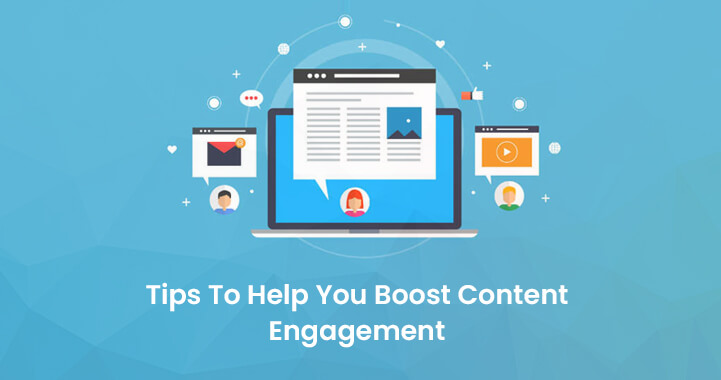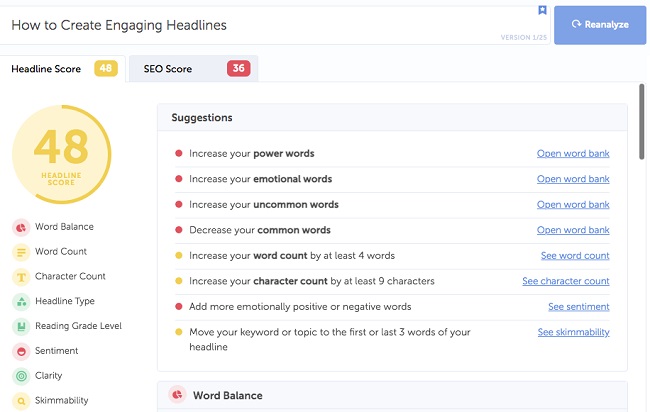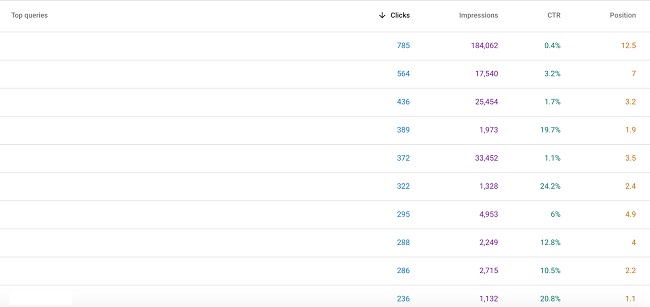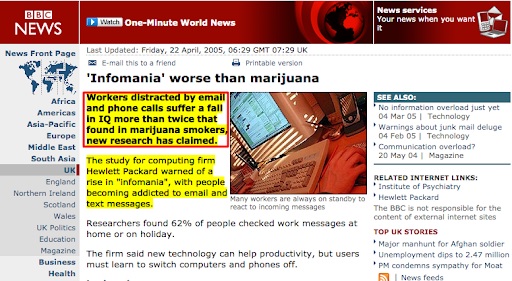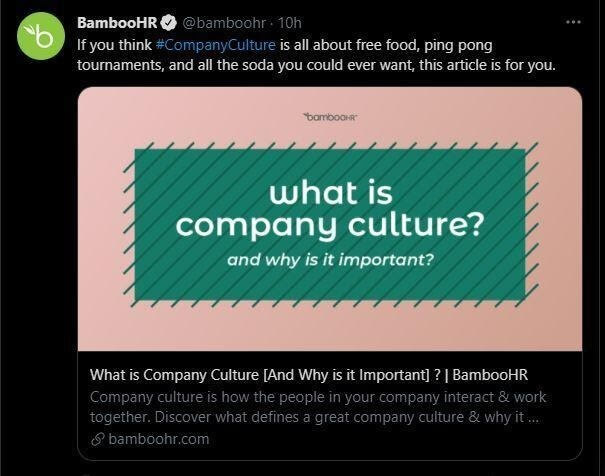Boost Content Engagement
The term “content engagement” is often thrown around in the digital marketing world. From prominent B2B marketers to niche bloggers, achieving a high engagement rate is a dream come true for anyone that publishes content online.
Table of Contents
If people find your content engaging, they’re likely to do direct branded searches on Google. People will also be less likely to click off your content and return to the search results. Both of these factors are beneficial for your search rankings.
So, how do you make this dream of high content engagement a reality? Read on to learn tips to supercharge content engagement across all the relevant platforms.
1. Identify Your Target Audience
The internet is a broad and diverse place. You can’t appeal to everyone’s interest. What you can do, though, is appeal instead to a specific group of people.
You want to grow your blog following, so your production efforts must directly target people who fit your customer persona.
A customer persona is the formal representation of your ideal customer and guides you to make the right decisions content-wise.
Creating your buyer persona requires you to collect data on your audience, usually through interviews, web analytics, and other data sources to identify relevant pain points.
The insight and attributes obtained from the persona will inform your decisions during content protection and help provide the best experiences, encouraging more interactions.
2. Create Engaging Headlines
A headline is your first point of interaction with your audience, and it has to catch their eye right from the onset. Consider it to be your “attention grabber.”
But creating a great headline is easier said than done, especially when you consider the number of companies competing for viewers’ attention online.
Tools like Coschedule’s headline analyzer can help you create headlines that get you more engagement. Check out the image to see how it works.
The CoSchedule tool is great for refining your headline. There are several great headline generators you can try.
If your titles can stand out, they will get more clicks, and more people will interact with your content. Make sure to track relevant metrics. You can use tools like Search Console, for example, to track impressions to clicks.
Insights from a tool like Search Console can help you understand how your headline is performing. If you see a low Click Through Rate (CTR), see the third column in the screenshot above, you may need to work on your headline.
3. Begin With a Gripping Introduction
You’ve successfully hooked your audience with an engaging headline, but the work is far from over. It’s one thing to get your readers’ attention, but it’s a different challenge to keep their attention.
So, roll up your sleeves because the hard work starts with putting together some captivating introductory paragraphs.
You could use several approaches for crafting a gripping introduction. However, you have to start by ensuring that the first paragraph draws you in. It must be undeniably enticing.
Carefully consider this piece from the BBC as an example.
It’s a powerful hook. You need to generate that same level of interest through your copy.
Short sentences, catchy phrases, and the overall intent of the content are all you need to cover in your introduction. You want readers to get a gist of what you’re covering, just enough to get them curious and want to consume the rest of your content.
4. Cite Relevant Sources
Trust and credibility go hand-in-hand when dealing with customers online. If your prospect trusts you as a resource, they’ll be more likely to accept product offers from you. EAT is also an important ranking factor on Google.
EAT stands for Expertise, Authority, and Trust.
Your content needs to be credible. Cite relevant sources for your industry. Industry experts can even become the focus of your story, as this example from Search Engine Journal nicely illustrates.
You can leverage input from industry experts to increase the reach of your content as well. For example, if you included a quote from someone in your content, you can tag them in your social media post. They might just retweet the link, which can put your content in front of new people.
5. Share Real-Life Examples and Hard Data
You should also use relevant research, stats, charts, and illustrations to support the points made in your content.
Check out this article on that topic from Neil Patel. Instead of just talking about what he thinks a business should do to increase sales using neuroscience, he includes relevant data that backs up his claims.
Referencing relevant sources will help you establish credibility and trust with your audience. It’s also a ranking factor.
6. Establish Niche Authority
One of the best ways to boost content engagement is to establish niche authority. If you are only publishing content around a particular theme, you are likely to slowly gain a core audience interested in the content you publish.
Your core audience will likely go to your website to find fresh content, share that content online, and link to the content.
Moreover, people who come to your site are more likely to stick around longer because you have lots of content related to their search terms.
It shouldn’t come as a surprise, therefore, that Google rewards niche authority. Sites with a clear focus are much more likely to dominate the search results for their thematic content.
7. Encourage People to Share Your Content On Social Media
Social media is a powerful way to engage and build an audience and promote your content. If your business doesn’t have a social media account, create that immediately to promote your website content, among other things.
The main social media channels to focus on are LinkedIn, Instagram, Twitter, and Facebook. The best channel for your business will depend on your niche.
Do your research, discover where your target audience hangs out, and get active on those platforms. Pro tip: Opt for logo designs that are immediately recognizable and help you stand out from other brands on social media.
8. Send Regular Newsletters
Email marketing is one of the most effective means of reaching new prospects and increasing engagement. It’s why most bloggers and online marketers tell their audience they should invest a lot of effort into growing their email list.
You can promote content through your email list. You can share new content manually through your monthly newsletter.
Alongside this, you can set up automation sequences to promote certain pieces of content, for example, including a link to some of the best content in your welcome email sequence.
Promoting content through your newsletter is a great strategy, as many of your email subscribers will be potential or former customers or clients. Here’s an example of how InVision uses email newsletters to promote content through its newsletter:
If you’re going to use your newsletter to promote your content, don’t promote every article you publish. Be selective. You should only promote content your audience will find interesting and valuable.
9. Create a Consistent and User-Friendly Brand Experience
Finally, make sure to provide a user-friendly brand experience across all your content channels. Making your website user-friendly means ensuring a fast-loading site and making sure it is easy to navigate, among other things.
You can use various tools to optimize the user experience. For example, a tool like Google Pagespeed Insights will reveal how fast your site loads and the changes you should make to improve page speed. On the other hand, heatmap tools can help improve the design and layout of your site.
The better the on-site experience, the higher the chance visitors will stick around. That’s important, as low time on site and a high bounce rate will negatively impact your search rankings. Here, choosing the right web hosting provider that can help you improve your performance.
Conclusion
You need to give your target audience strong reasons to engage with your content. Content engagement, after all, is intricately connected to SEO. The longer people interact with your content, the higher your chances of ranking high on search engine results pages.
But you first need to identify which of the people you want to reach on the interaction before you dedicate resources to aligning your message with your brand.
Then you must competently create content that sustainably grabs their attention and gets them sharing across different platforms.
You can use all of these tips or implement only the most suitable for your brand. Whichever way you approach it, you must establish a personal connection between your brand and audience for your content to yield the best results.

